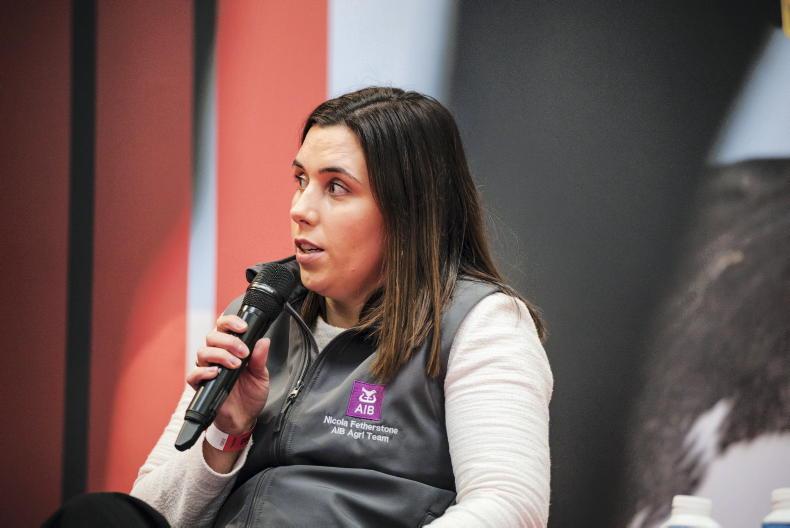The COVID-19 pandemic, Brexit and COP26 have resulted in a huge amount of uncertainty for businesses and farmers, much of which is outside their control.
However, lenders will want to see businesses and farmers managing the things that are within their control, and taking the necessary action.
This can be challenging, and difficult decisions may need to be made.
Business operating models have had to be significantly adapted to meet the health and safety needs of employees, customers and suppliers.
Farming businesses are currently experiencing high input prices for feed, fertiliser and energy. Managing cashflow is a critical priority in any business, never more so than now.
When engaging with lenders to seek new/additional credit facilities, it is important that the farming business can demonstrate the following:
There is a solid understanding of the actual financial situation.There is proof the farming business were operating satisfactorily pre-COVID-19, if COVID-19 negatively affected the business.There is a sound knowledge of current and future issues and risks for the farming business and there are plans and identified actions to deal with these. Overdraft facilities
Most farming businesses tend to rely heavily on overdraft facilities to fund both day-to-day working capital needs, and often, to fund longer-term investment needs such as paying upfront for a new piece of machinery. This can put pressure on cashflow.
Overdrafts are designed to accommodate short-term working capital needs and to fund unexpected or short term expenditure, not to fund long-term finance.
Financing fixed assets
To finance investment in fixed assets (such as machinery, equipment), there are other more suitable options such as term loans, leasing or hire purchase. It will make a real difference to cashflow management to apply for a three- or five-year loan/ lease where the repayments are spread over the life of the asset as opposed to funding such items from an overdraft. It is also much more cost- and tax-effective.
The typical interest rate for a bank term loan can vary between 3.5% to 6.5%, while the overdraft interest rate can vary between 7% to 10%, depending on utilisation.
Necessary information for a lender
Up-to-date financial accounts, over the last three years, reflecting the scale and overall profitability of the farming business is a must.
Generally, repayment capacity for a loan will be calculated over a three- or five-year term, to assess the average profitability of the business. This will give a better reflection of the business performance, not just the profits for one year, and will ensure there is sufficient repayment ability to fund any new borrowings.
The operation of the current account will also be viewed, to ensure the account has the necessary credit days and all existing repayments are up to date. Cashflow projections, tax confirmation, and security may also be required.
Credit history
If you are an existing customer, the lender will find it easier to assess your application as you will have a banking track record. If you are applying to a new lender, more detailed information may be required to establish repayment ability.
If there is pressure on the current account, be sure to engage with your lender early, to help avoid a situation where cheques or direct debits are returned unpaid.
Credit reports are a good indication of likeliness to repay, as they reflect previous performance on loan repayments. Lenders are obliged by law, to submit information about repayments made and missed each month to the Central Credit Register (CCR). The CCR is used by all lenders to check a potential borrower’s credit report when they are assessing any loan of €2,000 or more. Maintaining a good credit history is very important.
Read more
Machinery finance: understanding your options
Money Mentor: budget changes for employees and employers
The COVID-19 pandemic, Brexit and COP26 have resulted in a huge amount of uncertainty for businesses and farmers, much of which is outside their control.
However, lenders will want to see businesses and farmers managing the things that are within their control, and taking the necessary action.
This can be challenging, and difficult decisions may need to be made.
Business operating models have had to be significantly adapted to meet the health and safety needs of employees, customers and suppliers.
Farming businesses are currently experiencing high input prices for feed, fertiliser and energy. Managing cashflow is a critical priority in any business, never more so than now.
When engaging with lenders to seek new/additional credit facilities, it is important that the farming business can demonstrate the following:
There is a solid understanding of the actual financial situation.There is proof the farming business were operating satisfactorily pre-COVID-19, if COVID-19 negatively affected the business.There is a sound knowledge of current and future issues and risks for the farming business and there are plans and identified actions to deal with these. Overdraft facilities
Most farming businesses tend to rely heavily on overdraft facilities to fund both day-to-day working capital needs, and often, to fund longer-term investment needs such as paying upfront for a new piece of machinery. This can put pressure on cashflow.
Overdrafts are designed to accommodate short-term working capital needs and to fund unexpected or short term expenditure, not to fund long-term finance.
Financing fixed assets
To finance investment in fixed assets (such as machinery, equipment), there are other more suitable options such as term loans, leasing or hire purchase. It will make a real difference to cashflow management to apply for a three- or five-year loan/ lease where the repayments are spread over the life of the asset as opposed to funding such items from an overdraft. It is also much more cost- and tax-effective.
The typical interest rate for a bank term loan can vary between 3.5% to 6.5%, while the overdraft interest rate can vary between 7% to 10%, depending on utilisation.
Necessary information for a lender
Up-to-date financial accounts, over the last three years, reflecting the scale and overall profitability of the farming business is a must.
Generally, repayment capacity for a loan will be calculated over a three- or five-year term, to assess the average profitability of the business. This will give a better reflection of the business performance, not just the profits for one year, and will ensure there is sufficient repayment ability to fund any new borrowings.
The operation of the current account will also be viewed, to ensure the account has the necessary credit days and all existing repayments are up to date. Cashflow projections, tax confirmation, and security may also be required.
Credit history
If you are an existing customer, the lender will find it easier to assess your application as you will have a banking track record. If you are applying to a new lender, more detailed information may be required to establish repayment ability.
If there is pressure on the current account, be sure to engage with your lender early, to help avoid a situation where cheques or direct debits are returned unpaid.
Credit reports are a good indication of likeliness to repay, as they reflect previous performance on loan repayments. Lenders are obliged by law, to submit information about repayments made and missed each month to the Central Credit Register (CCR). The CCR is used by all lenders to check a potential borrower’s credit report when they are assessing any loan of €2,000 or more. Maintaining a good credit history is very important.
Read more
Machinery finance: understanding your options
Money Mentor: budget changes for employees and employers










SHARING OPTIONS